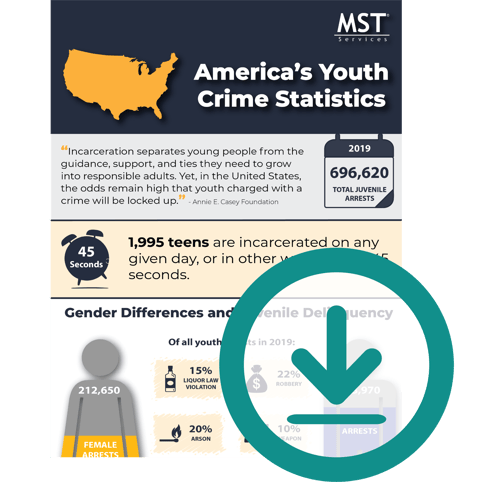 In light of Youth Justice Awareness Month (YJAM), established in 2008 to draw attention to adolescents impacted by the criminal justice system, it is time to address America’s youth crime statistics.
In light of Youth Justice Awareness Month (YJAM), established in 2008 to draw attention to adolescents impacted by the criminal justice system, it is time to address America’s youth crime statistics.
Crime Patterns and Trends Among Youth
In analyzing youth crime statistics, we can see how young people and their families are impacted by the way the justice system treats juvenile offenses. A new resource, The State Of America’s Children 2020, shows that in 2019, 1,995 youth were incarcerated on an average day and, of those individuals, 40% were estimated to end up in prison by the age of 25. Perhaps even more startling is the fact that on any given night in 2017, 935 children were held in adult prisons.
Diving deeper into the realities of the juvenile justice system, racial disparities continue to play a part in teen crime rates and it is noted that black children are 2.4 times more likely to be arrested and American Indian youth are 1.5 times more likely to be arrested than white adolescents.
These harsh statistics beg the question: how do we keep the streets safe and protect teenagers from the dangers of the legal system? Thankfully, these numbers have dropped substantially over the past decade due to the Juvenile Justice, Child Protective, and Mental Health systems that have worked together tirelessly on Juvenile Justice System Reform in order to provide better treatment for youth and families in their communities where it is so desperately needed. Even though this is just the beginning, there is so much more to be done. The Children’s Defense Fund acknowledges, “Children do not belong in prisons. Incarceration does not support the growth and development of our children; it places them at risk and limits their access to resources.” Understanding why youth offend is essential to prevent future crime, establish more rehabilitative alternatives to incarceration, and ultimately help adolescents realize their full potential. And while there is not one simple approach to keep adolescents safe and out of the legal system, by analyzing annual juvenile trends and advocating for more comprehensive evidence-based programs, youth have an opportunity for a much brighter future.
A Visual Explanation
MST Services recently published an infographic regarding America's youth crime statistics that illustrates the shocking numbers of youth that are affected by the juvenile and criminal justice systems. To download and view the infographic, please click here.
Evidence-Based Programs for Adolescents
Evidence-based programs (EBPs) and practices within the juvenile justice system have been rigorously evaluated and shown to be more effective at preventing youth crime than traditional approaches. Not only can these types of programs have a successful impact on children and their families, but their communities as well.
One EBP that is proven to work is Multisystemic Therapy (MST), an intensive intervention for youth between 12-17 years of age who are at risk of severe system consequences, including arrest, charges, and incarceration, due to externalizing, anti-social, and/or delinquent behaviors. With over 70 studies and 140 peer-reviewed journal articles, MST features the largest body of evidence of successful programs for high-risk teens. Through the use of evidence-based research and treatment models, MST produces 54% fewer rearrests over 14 years, a 75% decline in violent felony arrests over 22 years, and 54% less out-of-home placements across all studies. Additionally, MST benefits the whole family. Through MST, there is a 40% reduction in overall sibling arrest rates, a 55% decline in sibling felony arrests, and 94% fewer caregiver felonies, which, in turn, produces taxpayer savings for communities of up to $8,000 per family member.
Although teen crime rates are decreasing, there is still a need to reform juvenile justice. There are better rehabilitative alternatives than incarceration. During this month, “It’s time to take action for youth!”
Multisystemic Therapy (MST) is an evidence-based intervention. MST effectively treats at-risk youth and their families by utilizing a built-in suite of services within the home, school, and community settings. Services include but are not limited to: social skills training, drug and alcohol intervention, mental health services, and peer management.
To learn more about what makes MST such an effective intervention, download this report.


